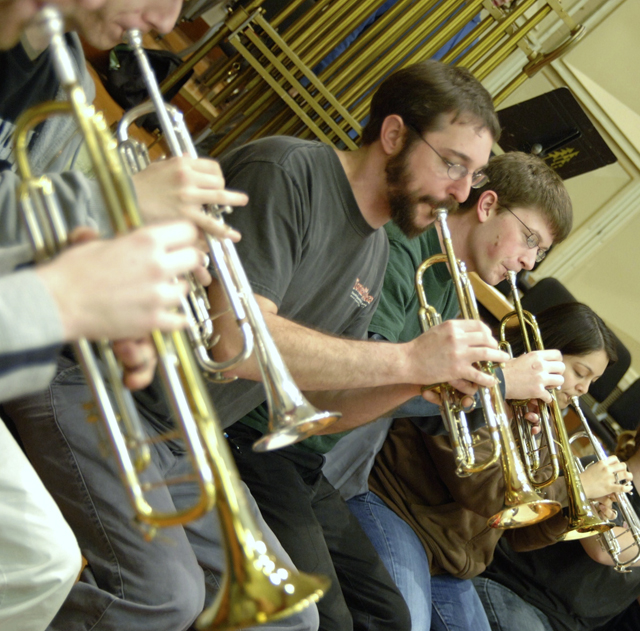
Leroy Anderson’s “Bugler’s Holiday”—a holiday favorite since the 1950s—centers the Band’s holiday concert, with solos by three student trumpeteers: Jesse Burns, Andrew Henderson and McKenna Smith. “The audience should be very impressed with their playing,” commented conductor Paul Cummings.
Percy Grainger learned to write band music in the U.S. Army Band in World War I, but he remembered the folk melodies of his Australian boyhood. He combined the two in “The Gum-Suckers March,” named for a local habit in Victoria of sucking on eucalyptus leaves. “It’s lyrical one moment, raucous the next,” Cummings said. “It’s a challenging piece for all the instruments, and not your typical march.”
When composer Robert Bennett walked past the dance hall as a boy in the turn-of-the-century amusement park called Electric Park, he heard snatches of popular tunes of the time. This music is reflected in his Suite of Old American Dances, the main work on the program. “The five movements show the music moving from dances like the waltz and the western one- step to ragtime, as popular music was becoming more influenced by jazz,” Cummings said. Bennett went on to become the legendary arranger for 1940s-60s Broadway musicals.
“Zacatecas,” a 19th century march by Genaro Codina is considered the second national anthem of Mexico. “It uses the rhythms and style of Mexican folk music,” Cummings said. “It’s still very popular.”
The only slow piece on the program is “Dusk” by contemporary American composer Steven Bryant, which reflects on the dual nature of the sunset, it’s “dramatic stillness.”
“It’s the contrast of the calmness of that time of day with the intense, fiery hues of the sky,” Cummings explained.
Now about that smear. “It’s a little known genre for wind band—a style of light march music in which the trombones use their slide to create melodic effects,” Cummings said. Only the trombone can slide through a range of pitches. Five trombonists display the smear technique in the most famous example of this genre, Henry Fillmore’s “Lassus Trombone.” “Lassus” stands for molasses, as in smooth as molasses … or as a slide trombone.
Tickets are: $7/$3/free for HSU students with an i.d. from the HSU Ticket Office (826-3928) or at the door. Conducted by Paul Cummings and produced by the HSU Music Department. For more information: HSUMusic.blogspot.com.